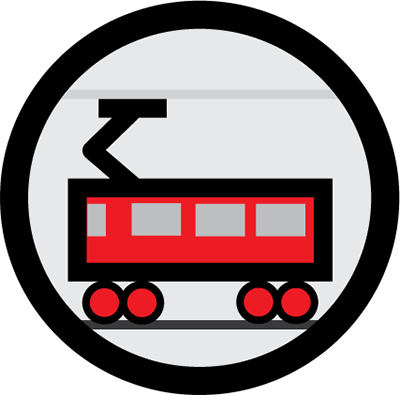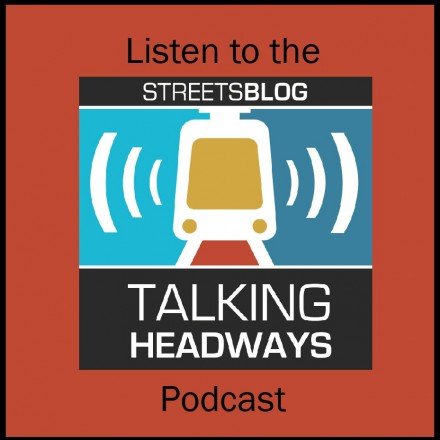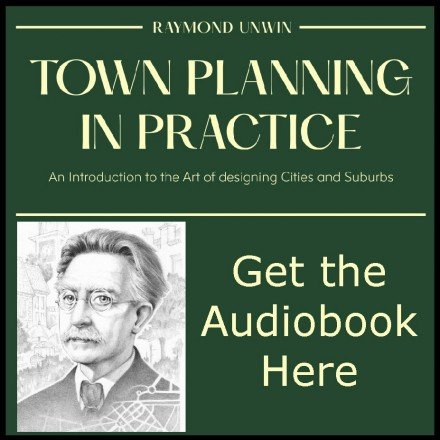(Unedited) Podcast Transcript 349: Active Transportation Parades
This week we’re joined by new Rail~Volution CEO Tamar Shapiro. We chat about her previous work in transportation and city planning at orgs like NUMO and The Governor’s Institute, how to measure transportation success, and the transportation parades before German soccer games.
For the audio of this show, check out the archive at Streetsblog USA.
Below is a full unedited transcript (computer generated):
Jeff Wood (1m 25s):
Well, Tamar Shapiro welcome to the Railvolution podcast.
Tamar Shapiro (1m 54s):
Thanks so much. I’m really pleased to be here.
Jeff Wood (1m 56s):
Well, thanks for being here. It’s been a long time. I think I told Hillary when I first heard that you were the new head of revolution that we actually met a while ago back in, I think it was 2006 or so. I was in Rhode Island for the governor’s Institute, work with you and, and Harriet two goning. And that was my actual, my first work trip ever for reconnecting America at the time. So we go a long way back, even though I haven’t talked with no, I
Tamar Shapiro (2m 20s):
Remember that trip that was just after we’d launched the governor’s Institute on community design. It was our first, it was our first work trip for that organization. So we, we, we learned a lot
Jeff Wood (2m 30s):
And Rhode Island Doesn’t have a street car, which I guess that’s what, one of the things we were talking about, but I guess they went a different direction, which is totally fine, especially what we know now about street cars and how they work and what works for cities. So that was fun. It’s just kind of a fun reminder, but before we get started for the rest of the show, maybe you can tell us a little bit about yourself. Sure.
Tamar Shapiro (2m 49s):
So I guess I’ve been working on issues related to urban policy for a couple of decades now, and it really grew out of interests. I developed as a child. So I spent a lot of time when I was young, moving back and forth between Europe and the U S for family reasons. So pretty early on, I saw how very different cities could look. And I also recognized, I think pretty early on that a lot of those differences, weren’t just coincidental that they were the result of decisions that had been made and that they could be made differently. And so it was that kind of awareness and going back and forth between these different environments that really got me interested in cities to begin with.
Tamar Shapiro (3m 30s):
And then I went on to study law, which was great in many ways, but I don’t think I was destined to be a lawyer. I, there were many things about it that were wonderful. And I ended up practicing affordable housing law, which definitely fit both my interests and my values. And I slept well at night and I felt like I was doing good work, but I would sit in meetings and find myself emptying the clients, which in the case of that job, where mainly either public housing authorities or non-profits and thinking they’re making the kinds of decisions that I want to be a part of. And so that’s when I found myself leaving the law to do urban policy work in the nonprofit sector, which I’ve now been doing for a couple of decades and continuing at revolution.
Jeff Wood (4m 12s):
Are there lots of lawyers that don’t sleep well at night? You know, you’d have to ask them. I don’t know. Well, where were some of those places that you lived abroad? Where were you coming back and forth to in that time period?
Tamar Shapiro (4m 24s):
Primarily Germany, my mother’s German, my, my family is from there. And so I spend a lot of time in Germany, both as a child and as an adult, and actually spent a couple years between 2017 and 2019. I also lived in Germany again. And that was definitely another opportunity for me to see what a city with a really wonderfully functional public transportation system with. Like we rented a place. And for the first three months, I remember thinking to myself repeatedly, isn’t it wonderful. We got so lucky with this particular place. We can get anywhere. We want to go on public transportation. Isn’t that great. But of course, about three months in, I realized it had nothing to do with where we’d rented the house.
Tamar Shapiro (5m 5s):
It would have been true virtually everywhere in the city. So yet again, even as an adult they’re eye opening moments from seeing different contexts,
Jeff Wood (5m 14s):
Or was there like a moment, obviously you’re, you’re drawn to cities, you’re interested in cities and housing and transportation and all those things, but was there a moment when you were younger that you were like, oh, this is cool. This is, this is where I want to be.
Tamar Shapiro (5m 25s):
Well, I’m not sure there was one moment, not when I was younger, that actually came together at a bit of a different point. That was, I spent a semester in college studying abroad at the university of Edinburgh. And I took an urban sociology class. And I suppose I took that class because of the interests that I developed when I was younger. But really that was a moment that brought a lot of things together for me. We were sent off to do a research project on the changes in commercial main streets in Edinburgh, and also in some of the towns surrounding interviewing shopkeepers. Who’d been there for a long time interviewing some shopkeepers. We tracked down who were no longer there because chain stores had taken over in place of their small businesses.
Tamar Shapiro (6m 8s):
And that class actually was what really, I think made me decide that this was a field that I wanted to remain in professionally.
Jeff Wood (6m 16s):
That’s awesome. Well, you’ve worked for and been the head of numerous organizations, even like we mentioned across the pond. Do you have a favorite, like livable city experience, something that happened in a city, you mentioned deciding on a place in Germany, but do you have like a favorite experience where you’re like, wow, this just all works.
Tamar Shapiro (6m 32s):
I’ve lived in many cities that I’ve loved for different reasons. I’ve lived in Philadelphia and I absolutely love the way center city brings together both commercial and residential with a degree of denseness that is not that common in the us. I love the quirkiness of the city. And then, you know, on the other side of the Atlantic, the city that I lived in most recently was Leipzig, which is a city that is both very urban. And at the same time, extremely green with paths through woods and along rivers where just the biking was just extraordinary. And so that’s another favorite activity of mine is, is biking in cities where it’s safe.
Tamar Shapiro (7m 14s):
And I will admit, I grew up in central Illinois when I, when I wasn’t abroad. And so I’m a little bit lazy when it comes to Hills. So flat cities with lots of green and lots of bikes are key.
Jeff Wood (7m 24s):
That’s good. That’s good. That way you don’t have to walk up hill in the snow, both ways like our parents always talked about, well, then you’re now the CEO of revolution. How have the first few weeks been?
Tamar Shapiro (7m 34s):
It’s been a whirlwind. I’ve been there just over two weeks now. And I expected it to be a whirlwind. I think starting any new job. Like this is always very intense. A lot of listening, a lot of learning, a lot of trying to figure out what’s already going on. And of course I have ideas that I’m bringing to the mix as well, but I really believe in taking the time to listen first and learn from those. Who’ve been doing the work for a long time. It’s been great. Despite the fact that real dilution is based in Minneapolis, I will remain based in DC, but I’ve already taken my first trip out to Minneapolis, which was also my first post pandemic work trip. So it combined many different, many different novelties. How did that feel?
Tamar Shapiro (8m 15s):
The post pandemic part honestly felt strange. It was strange to be on a work trip. Again, it’s been a long time since I think many of us have been traveling, of course, but also in settings with groups of people indoors, I’ve been lucky enough not to have to be in those situations over the course of the pandemic. Of course, there are many people who are not that lucky, but it definitely felt like a big change on the flip side, getting out there and getting to know my new colleagues and getting to know the rail evolution world was wonderful.
Jeff Wood (8m 46s):
Anything that you’ve learned about revolution that you didn’t maybe know before?
Tamar Shapiro (8m 49s):
I don’t know that there are things I’ve learned so far that I had absolutely no idea about, but it’s been very interesting for me to see some of the changes that have already been underway and the processes that people are thinking about. I know that revolution is in some sense as best known for its conference, which is of course a wonderful conference. One of the things that I’m eager to explore is how to take the special skills and the special approach and the special feeling of that conference and develop other programming. So that rail solution can really be supporting practitioners year round in many different ways. And it’s been interesting to see how much of that thinking is already beginning to percolate and how many things are already in place.
Tamar Shapiro (9m 31s):
So it’s been really great to see that many of the things that I come to this job hoping to work with organization on are already, you know, moving forward or at least being thought about in very serious ways.
Jeff Wood (9m 44s):
Yeah, for sure. Well, you’re recently at pneumo, the new urban mobility Alliance. I actually have a box of mobility right here in front of me. That’s great. You know, I opened it up. I looked on it and you know, when I got it, it was like right around, maybe the beginning of the pandemic I was thinking about, you know, doing like a live stream or something to play. Maybe we should play some time. It’d be fun, but I opened it up and I’ve seen all the cards and I haven’t played it yet, but I’d like to, it might be a fun thing to do like an online group of folks playing the game. Somebody has to organize the card games. You have to organize the cards. One person will have to be the card master, but it would be super fun. It’s definitely
Tamar Shapiro (10m 20s):
Been done. I can connect you to my pneumo colleagues. There definitely have been online games of mobility.
Jeff Wood (10m 25s):
Did the game take off? I mean, it’s a, it’s a very innovative idea in terms of getting people thinking about the different transportation, ideas, policies, political barriers, et cetera.
Tamar Shapiro (10m 35s):
I think people, really people who have the game really enjoy playing it. I think what I guess I would highlight is that it’s a playful approach to policy and that is something that’s really important to pneumo. And that’s certainly something that also, I hope to bring to rail evolution. I think it’s a way of engaging new audiences and it’s pretty core to Neumos identity, this idea of trying to take an innovative and playful approach.
Jeff Wood (10m 57s):
Yeah. And what were you all working on over at pneumo besides making fun transportation games?
Tamar Shapiro (11m 2s):
I didn’t actually make any of the games. I can claim no credit for that. No, I was working on a, I guess, two primary things while I was at pneumo. I was working on federal policy work, helping to set new most federal policy agenda, working with other partners, obviously a really interesting time to be doing that work with the switch to administration and a lot going on. And then on the flip side, I was responsible for our on the ground pilots in Detroit. And so we worked really closely with a number of partners in Detroit among them, the office of mobility innovation within the city. And we launched a pilot program actually just pretty quickly after the pandemic hit, we launched a pilot program, getting least e-bikes to essential workers, to help them with their commutes.
Tamar Shapiro (11m 50s):
The idea being that at that point, of course, there were a lot of concerns, transmission on transit. Also transit had been cut, you know, in the wake of the pandemic, the start of the pandemic. And so a lot of essential workers needed ways to get to the office. And so we devised this program, which was not a shared e-bike program. It was long-term leases of e-bikes ran and last summer we’re running it again. Or are they at this point, I guess they’re running it again this summer. And that was a really, a lot of fun to do that very on the ground work, working closely with partners in Detroit. How
Jeff Wood (12m 20s):
Did folks feel about the e-bikes? I’ve heard lots of good things, but I have actually never written one. Well,
Tamar Shapiro (12m 25s):
It was a small pilot. We had a fairly small number of e-bikes at our disposal. They were donated by GM. And so the pilot was not huge, but those who did use the e-bikes had overwhelmingly positive things to say about their experience with the e-bikes. We did surveys obviously to try to track the success of the program. People loved having access to the e-bikes. I am a big believer in e-bikes as a really effective, low carbon, easily accessible transportation mode.
Jeff Wood (12m 53s):
We’ve seen the mobility space change in the last few years. What’s the biggest change that you’ve seen in the space. I mean, it seems like it goes really quickly and then it kind of slows down again, but then it goes really quickly and it slows down again in my estimation.
Tamar Shapiro (13m 5s):
So many changes, you know, for me, it was interesting when I left DC in 2017 to move over to Europe for a couple of years, you know, this is probably not entirely accurate, but the way I recall it, there was basically virtually no shared micro mobility in the city. Of course the shared bikes were there, but no scooters, no, e-bikes no shared e-bikes none of that was there. And then when we returned two years later, it was like a completely different world with these new mobility modes, just absolutely everywhere with both the good and the bad that that brought with it, because obviously they often weren’t regulated as one might wish or in people weren’t using them as one might wish, but obviously they brought additional options.
Tamar Shapiro (13m 47s):
So that change was really remarkable for me because I missed the moment in which it happened and then came back to a completely different world. I think the key that I see looking forward is to find ways to better integrate those modes with transit, which in my view has to be the backbone of any multimodal system. And there are places that do this better and there are places that don’t do it so well. And there’s many open questions still, but I think that integration both the physical integration, you know, where, where you can connect to these modes physically in a place, but also technologically in terms of integrating payments. I think that’s going to be a key challenge and also opportunity in coming years.
Jeff Wood (14m 27s):
Yeah. We recently chatted with Andrew Salzberg from transit and we were talking about open-source mobility, you know, futures. And it was interesting to hear his take on those ideas. And also just thinking about, you know, what the future of transit and micro mobility and general mobility might be, especially after the pandemic. I feel like it’s gotten to a certain extent, you know, some bad publicity almost as well as some hard times because of the pandemic. Do you think we come out of this, the situation we’re in right now where we kind of have some low funding, we have the trips to work are not as big as they were before. Is there a new normal, how do we come out of the pandemic? And what do you see as the future of these connections?
Tamar Shapiro (15m 6s):
I think coming out of the pandemic, I’ve seen a lot of references to wanting to bring back the riders that transit systems used to have, and that is critically important. But I actually think that the more important question is how can we build the transit system that we really want to have? It’s not just about bringing back writers who used to ride transit, but it’s about creating a system that works for everyone. And I think it’s kind of a moment to take a step back. Of course, it’s, it’s in many ways, a desperate moment given the ridership levels that have plummeted during the pandemic, but it’s also a moment of opportunity who knows what will happen at the federal level.
Tamar Shapiro (15m 46s):
You know, a lot of that is still unwritten, but there’s at least the possibility that we will have really significant investment in transit. And the awareness of the importance of transit I think is higher than it has been in a long time, particularly the importance of transit to essential workers and to transit dependent populations, which of course tend to be BiPAP communities or lower income communities. And so I think there’s just a very high awareness of the equity implications of funding. We’re not funding transit at this stage. So I think while there’s a lot to worry about, I actually think there’s a huge amount of opportunity right now.
Jeff Wood (16m 25s):
I mean, that’s another interesting thing we’ve talked about, you know, rush hour changing and the types of trips that rush hour serves, especially if you’re doing express buses and the types of things that may cost a bit of money, but they’re focused on that, you know, a couple of hours area, maybe shifting the landscape overall, it’s actually more beneficial from an equity standpoint.
Tamar Shapiro (16m 44s):
Yeah. I think it’s very unclear what exactly will happen with travel and employment patterns, post pandemic. And of course, a lot of people are working to try to figure that out. And a lot of people are trying to plan ahead. We don’t know what will happen yet. We’ve just been dealing at real dilution with this question of what do we do coming back to the office or not hybrid or not. What does that mean for the size of the office? What does that mean for the lease? These are really concrete questions that organizations are facing right now and there’s those decisions are being made right now. So I think it remains to be seen. But what I love about rail solutions mission is the fact that it really focuses in on the connection between transportation and land use.
Tamar Shapiro (17m 24s):
Because in my view, what this is really all about is access it’s about the fact that people need access to jobs and to healthcare and to education and to parks and to food and to, you know, all those daily or regular needs. And that can be solved through transportation, but it can also be solved through land use and community development. And so, yes, I think there will probably be very different patterns, post pandemic, if more people stay home, a lot of those services will pop up in neighborhoods. That’s, you know, that’s sort of the community development solution. It will change most likely transportation patterns as well. It will be fascinating to see what happens, but I’m firmly convinced that there will continue to be a very strong need for public transportation, even if it looks a little bit different in the future than it has in the past.
Jeff Wood (18m 10s):
Yeah. And the transportation changes that are happening. I mean, obviously one of the things that, one of the things that I’ve been saying is that I don’t like to predict the future because we have no idea what’s going to happen. And like you said, and there’s a lot of smart people working on trying to figure that out. And we might not even know for a couple of years to understand how everything has shifted, but it is, you know, something that, you know, you mentioned leases and thinking about going back to the office. And there was a really interesting piece, I think in slate by Henry, GraBar talking about, you know, how we’re missing some of the bigger picture of things too, as well, including childcare and those other types of infrastructure, things that aren’t part of the transportation system, but they determine how you can operate a society as a whole. And so it’s interesting to think about it from that perspective as well.
Jeff Wood (18m 52s):
Thinking about what happens when, if we do come back, are those other things in place too. And I think that connects to the greater idea of livable communities and within revolution.
Tamar Shapiro (19m 1s):
Yeah. And it’s also really important to just remember that there were lots of people, you know, a significant part of the population that continued to go to work and had to go to work and had no choice in the matter and was dependent on transit throughout this time. Right. And you know, those were people that we began to call essential workers during the pandemic, but they were essential before and they will be essential afterwards and they will continue to go to work and they will continue to provide all sorts of services that others need and they will continue to use transit. And I think it’s easy to get a little lost in discussions of, in important discussions of what those who were able to work from home during the pandemic will do. But it’s important to also not forget that there were many who did not have that choice in the first place.
Jeff Wood (19m 45s):
Absolutely. Well, when you were at SGA, you worked on building capacity for governors. What’s the most interesting thing that you worked on there. And how do you think governor’s thoughts about livability have changed over the years?
Tamar Shapiro (19m 56s):
I’d say what was really interesting to me when I worked at the governor’s Institute was the interest that we had in places where we didn’t expect it. We worked with a lot of governors who were in Western mountain states, for example, where we didn’t necessarily expect interest in working with an organization that worked on land use and community development and zoning and issues like that. But there was great interest. And what was really striking was that while the challenges were in the context were of course different, I would never want to suggest that they weren’t different from state to state. There were surprising similarities as well. So I would say the similarities of the challenges that we discussed with governors and with our cabinet secretaries outweigh the differences.
Tamar Shapiro (20m 41s):
And I think that was to me the most interesting piece and something that we tried to convey every time we came into a new state, the first thing we heard was, well, everything’s completely different here. And I understand that sentiment. And I also think things are different from place to place, but we would sort of cautiously and slowly, you know, maybe, maybe not as different as you think, maybe there are actually things that can be learned from other places. So I would say that was for me, the most interesting piece in terms of what’s changed at the state level. I think for me, one of the most interesting experiences at the governor’s Institute was actually doing work in Wyoming, where the governor asked us to, which was very unusual.
Tamar Shapiro (21m 22s):
This was not normally normally the governor’s Institute consisted of, you know, fairly small group workshops with governors and their cabinet secretaries talking through detailed issues with some experts in the room. But in Wyoming, the governor at that time asked us to put together a conference that would bring together a large swath of, you know, hundreds of sort of local leaders from Wyoming to help define the future that they wanted for their state. That was a very different experience than what we normally had, but it was absolutely fascinating and fascinating again, to see that the things that the local leaders wanted for their communities was really not very different from what local leaders all around the country wanted for their communities.
Tamar Shapiro (22m 8s):
It was a really fascinating an eyeopening experience. So that’s probably the Institute where I learned the most
Jeff Wood (22m 14s):
Nice, well, you’re a lawyer you’ve worked in housing as well. You’ve worked in transportation and on design, what’s something you think these different silos connect on or something that maybe they feel disconnected about. Like all of these things are separate when we make rules and laws. And a lot of times we talk about housing, we talk about transportation. We’d like to talk about them together, obviously, because that’s where we’re coming from. But are there places where in your experience they’ve felt a little bit disconnected and are there places where they felt really connected?
Tamar Shapiro (22m 44s):
I think they are still too often disconnected despite an awful lot of work over the past decades to try to better connect transportation, land use, and community development, actually just the jobs that I’ve had. I’ve always been most interested in the connections between these different aspects of our urban policy. And yet I’ve often found myself in jobs where I’m not really addressing those connections where I’m dressing one or the other. And again, that’s part of what appealed to me about rail evolution was the explicit focus on the connection between transportation and land use and community development. I guess I think that to really change how people approach these silos, the connections have to be embedded embedded in daily practices and really mundane ways that I don’t think they are yet just embedding transportation and land use overlap at all levels of government in every manual that is out there of which there are many in every sort of planning process and every step, I think that’s what it will take to actually change and to try bring together those fields.
Tamar Shapiro (23m 47s):
And there’s been a ton of work moving in that direction. I don’t mean to suggest there hasn’t been, and yet it is surprising how often transportation decisions and land use decisions are still made in isolation. I think one of the ways to bring these fields closer together is actually through community engagement and community involvement, which is of course hugely important for many, many reasons, including the fact that our transportation system has basically been defined by inequity and by racism over decades. And there’s a real need to undo that, and same is true of our land use system. Of course. So community engagement is critical regardless, but I also think that if you start with the needs and the desires and the sort of daily wishes of residents in a particular community, those aren’t put into silos, those are definitely holistic.
Tamar Shapiro (24m 37s):
And so I think if that’s what you start with, you’re going to get a much more holistic outcome at the end as well.
Jeff Wood (24m 42s):
And that goes back to what you’re talking about, about access to people recently talking about access and how it’s not just putting something close by. It’s giving people opportunities to get to the places where they want to go. And they feel connected to their places and people that they want to be connected to. So not just putting a grocery store next to them, but giving them access to the grocery store that they want to go to. Yeah,
Tamar Shapiro (25m 3s):
Absolutely. Absolutely. I think on access, you know, that was something that we worked on a fair bit at pneumo from the federal perspective, but it would also apply to state governments. I think that we measure success in transportation, according to the wrong metrics. At this point, we tend to measure success in transportation. The transportation system is considered successful. If you can move a vehicle from point a to point B as quickly as possible, when what you really want to measure is in fact access, of course, there are other things you’d want to measure too, like greenhouse gas emissions, but that access piece is almost entirely missing from performance measurement systems at the federal level and in almost all states.
Tamar Shapiro (25m 44s):
And I think that’s a real opportunity to try to shift the framework and it sounds wonky, but it’s really just about redefining what we, what we want to achieve and why do people want transportation? They want it because they need to get somewhere. So let’s measure if they can get there
Jeff Wood (25m 58s):
There’ve been any progress made on that front. I mean, we’ve talked about that a fair amount, but it seems like at the federal level, we’re still talking about giving, you know, state deities money and then them having them spend it however they want. Well,
Tamar Shapiro (26m 9s):
So there has been progress or at least, you know, movement. The, the recent house bill reauthorization bill does have access performance measurements, a system to try to establish them in in it. And so that’s a great step in the right direction, who knows, you know, what will happen with that, with that bill, but they’re in there and, and on the greenhouse gas emissions side, you know, USDA has indicated that they plan to move in that direction. So I do think there’s movement. I think there’s still a lot of work to be done, but there’s just sort of this basic question of how do we define success? What does it mean? What do we want from our transportation and our land use systems? And I think we’ve been answering that question wrong for, for far too long.
Jeff Wood (26m 54s):
I guess a lot of times we want to put it in some sort of a formula or a way to get data from it. But it’s, it’s really hard to define what that actually means, I guess, and what that means to different people too. It’s not the same across all groups of folks who want to get places I imagine.
Tamar Shapiro (27m 8s):
No, but there are actually ways to measure it and it is being measured. I mean, it’s being measured by, by local transportation agencies is being measured by some state deities. And of course there are ways to perfect that measurement. And of course you’re never going to capture exactly, you know, the specific place that every individual wants to go to, but you can certainly measure access to key services and access to jobs and the data exists, which it didn’t, you know, always there’s a much greater availability of data now. So I think we’re moving in the right direction, but I do think it will also take a pretty fundamental rethinking of public investment in general. What are we trying to achieve with public investment?
Jeff Wood (27m 45s):
Well, so you live in Germany for a number of years. You mentioned earlier, you’ve worked at the German Marshall fund and we’ve chatted on the podcast about a number of great ideas, including for Christopher boned and high-speed rail, Eric , who was the German Marshall fund fellow for a little while. He’d been on the show, a number of times talking about high-speed rail innovations. What’s something that you learned from German transportation policy or German transportation and land use policy that you think is really fascinating and maybe want to bring back and learn.
Tamar Shapiro (28m 11s):
There’s so much. And the example that I will give is not a, it’s maybe more of a personal and lighthearted example, as opposed to an earth shattering example, but I think it does get at how differently the coordination between transportation and other areas of civic and urban life happen in Germany. So when we were living over in Germany for the, those two theaters between 2017 and 2019, we became pretty big fans of the local soccer team. And we attended most of the home games, which took place in a stadium with really a tiny, tiny parking lot in front of it. There were also debates about what happened in the neighborhoods around it on game days.
Tamar Shapiro (28m 55s):
So clearly people were driving to the stadium, but the parking lot was tiny. And we would bike to the stadium, which was quite central and arrive on our bikes and push our bikes across the parking lot at tiny parking lot. And there’d be throngs of people, either getting off the tram at the nearby stop to come to the game, plus others who were pushing their bikes. And every game felt like a local bike, pedestrian public transportation parade. That’s what it really felt like to me. The stadium was right along the river. And after the game, you know, the paths along the river were just full, absolutely full of people, biking home. And I don’t think there’s many cities in the us where you would see that coming from a very large sporting event from the stadium.
Tamar Shapiro (29m 40s):
And part of that also that public transportation was included in the price of the ticket to the sporting event. Not only was that true for sporting events, that was also true for cultural events. If you went to an orchestra concert in the city, public transportation was included in that these are small little examples of coordination, but it just shows the mindset that is thinking, how can we make it as easy as possible for people to access cultural events, sporting events, things they want for their, you know, not just for daily needs and jobs, which is of course a big part of the equation, but also for recreation also for their enjoyment. How can we make sure that it is as easy as possible for people to use public transportation to get to those destinations?
Tamar Shapiro (30m 21s):
So that’s one of my fond memories is coming from the soccer games and just seeing the nonstop parade of bikes going both ways out of the stadium.
Jeff Wood (30m 30s):
I’m guessing this is red bull. Yes, But not an uncontroversial soccer team. Yes. Not no. Well, but you know, for Americans, it’s been a great soccer team. Tyler Adams plays there now. And I think, I think Jessie marsh is actually going to be the coach he’s American as well. So soccer podcast, Well, I Didn’t, but I saw Leipzig on there. I was like, Hm. I wonder if, what, to some red bull games, I’m a huge soccer fan. It’s one of my favorite sports. But yeah, I mean, it’s really interesting. Cause one of the things I went to the Olympics in 2012 in London, and one of the things that I was really excited about was going to the women’s soccer final, where fortunately we won the gold, but I was there and I got off the train and there was this huge promenade that goes from the train station to Wembley.
Jeff Wood (31m 15s):
And, you know, it’s so huge that, you know, throngs of people can walk from the train station to the stadium. And I just remember that in my mind, going back up the steps and looking back on the prominent towards the train station when I got to the top and it was just an amazing look at humanity and it wasn’t just the Olympics. Obviously it happened this last, you know, a couple of weekends ago with the Euro final, which was also at Wembley. You could see that promenade displayed in many of the pictures as well. And so I think sports is an interesting connection because for a lot of people, it might be their only connection to public transit. I know here in the bay area, a lot of people take Bart and muni to giants games. And it’s something where I think that a lot of those folks, they might not use it otherwise, but for the games and for these special occasions going to a concert or whatever else, even for the A’s games as well.
Jeff Wood (31m 57s):
I mean, thinking about going to A’s or warriors, when they used to be over at Oracle, those were might be the first introductions for people for transit or even biking. So it’s a really interesting connection that can be made between sports and the transportation, even though it’s a special event, it’s a special event for many because they’re first time maybe taking transit. Yeah.
Tamar Shapiro (32m 16s):
And I think it’s really important to get people on transit that, that first time, you know, taking it, if people are unfamiliar with transit, I think there’s a, there’s a hurdle to overcome there. And then once you’ve figured out that first ride and you’ve taken that first trip on the system, it all becomes demystified.
Jeff Wood (32m 31s):
It’s kind of rush hour on steroids, right. I mean, it’s because you’re trying to fit so many people into a small area. Here’s another interesting question. You, so if you could design a front page or a lineup of stories to cover the issues that you think are the most important for livability, what would you include and what would you include on page one?
Tamar Shapiro (32m 48s):
I think there are two things that if you’re talking about livability in this transportation land use community development connection, I think there are two things that would really have to be on page one there the two overriding issues. And the first would be repairing a transportation system that has been deeply shaped by racism and by inequity, that would be the first and then the second would be addressing climate change. And so I think there’s a lot underneath both of those. I also think they are connected. You know, the two goals go hand in hand, not least because the impact of our carbon intensive transportation system falls also unequally on those very same communities that tend not to have access in the way that we’ve been talking about.
Tamar Shapiro (33m 30s):
So I think those two issues really rise to the top because there’s an imperative now to tackle both of those injustices, there’s just no time to wait. And I think there’s a lot you can unpack within each of them. I think one of the things that I’m really interested in exploring at real evolution for example, is in the context of rethinking public investment. And what that means is this idea of community wealth building. And is there a way that we can connect transportation to the need, to create opportunities for community wealth building, particularly in BiPAP communities that are those that have been most harmed by the inequities in our transportation system, whether that means, you know, thinking through wealth building, using real estate that is owned by transit agencies, which you know, is of course has all sorts of potential issues associated with it, particularly at a time when transit ridership is low and there may be need for funding.
Tamar Shapiro (34m 24s):
But I think it’s really important to think that through, or just exploring new community ownership models in areas adjacent to transit. So I think that question of how we can connect transportation to building community wealth is something that I’m really excited to explore. And then on the climate side, I would say, you know, part of what I’m excited about is there’s a lot of talk about electrification right now, which is really, really important, but it’s also important to say clearly that electrification is not going to be enough and not soon enough. And that transit and bike and pedestrian solutions have to be on the table and have to be supported. And so I think that is another area where I’m really excited to work with revolution.
Jeff Wood (35m 7s):
Is there anything on the gossip page on the back page, on the gossip
Tamar Shapiro (35m 11s):
Page? I’m not a big fan of gossip pages
Jeff Wood (35m 15s):
Me either, but it’s a fun kind of a, if you were to put something there, it’d be interesting to hear well. So I know you’ve only been at revolution for a couple of weeks, but perhaps you could kind of give us an idea of where you hope the conference takes us in the next few years. I’d love to hear more about that.
Tamar Shapiro (35m 30s):
Well, I hope the conference becomes the core of an organization that is broader, that supports practitioners, which I do think is the core of what revolution does really well is to support on the ground practitioners and advocates. The conference, I think can be the core of much broader programming. There’s so many ways to support those who are doing this really hard work on the ground, whether that’s through training, whether that’s through technical assistance, whether that’s through trying to work collaboratively, to tackle some of the really difficult questions there aren’t answers to yet. I mean, I think that real dilution has been really good, excellent at sharing solutions that are out there.
Tamar Shapiro (36m 12s):
That’s something the conference has always done. That’s something I think we can find new ways to do in different formats. I also think beyond that, that revolution can and should be part of working with its partners and has in the past. But I think we need to continue to work with our partners to find new solutions to new challenges. And that’s the piece that I’m really excited about is how do we develop partnerships that help us take on some of the hard challenges and push the boundaries and come up with, with new solutions and new ideas that can meet the very strange world that we find ourselves in today.
Jeff Wood (36m 50s):
Where can folks find you if they want to reach out and say hi, or if they have any questions, the best
Tamar Shapiro (36m 55s):
Way to reach me is via email. And that email is Tamar [email protected]. It’s also on the website. So if anyone forgets or doesn’t, doesn’t hear it right, you can always find me on the rail evolution website and look me up that way.
Jeff Wood (37m 9s):
Awesome. We’ll take our thanks for joining us. We really appreciate your time.
Tamar Shapiro (37m 12s):
Thanks so much for having me. I was excited to be part of this podcast and really excited to get started on the work with revolution.










